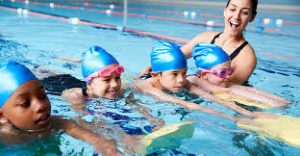Learn to Swim | Beginner Lesson 4 - Swim Long Distance - Breathing - Rollover
The MISWay’s Beginner Swimmer program is concluded by teaching swimmers to swim long distances with different breathing techniques. Swimmers who can complete this skill over long distances (50m+) effectively are considered independent & capable swimmers, giving parents peace of mind that their child can now swim by themselves, and be able to self-rescue in the event of a fall into deep water.
This instructional video will demonstrate the 2 primary breathing techniques taught in the MISWay, lifting the head to breathe and rollover breathing. Pay close attention to the progressions and tricks used to gradually transfer complete autonomy to the swimmers.
Lifting the head to breathe is taught by using the progression for the ‘Catch & Release’ method, which involves quickly alternating between a short front swim and coming up to breathe with assistance. Assistance is gradually removed, transferring more independence to the swimmer until they can lift their head to breathe by themselves.
Rolling over onto the back to breathe (also known as the swim-float-swim technique) is one of the more challenging skills in the Beginner Swimmer program. Initially, this technique can be shown by kinaesthetically turning the child on their back mid swim by holding their head and arm (as shown in the video). Like the Catch & Release, assistance should be gradually withdrawn, transferring full control to the swimmer.
As swimmers get more comfortable, these long-distance swims should be combined with other Beginner Swimmer skills to develop comfort, confidence, and above all independence. For example, have your swimmer retrieve an object from the bottom while in the middle of a distance swim. Comfort with these techniques will create the foundation for successfully learning the basics of the 4 competitive strokes in our Intermediate Swimmer Program.
Remember beginner swimmers are mostly young children so swimming must always be fun first. Skills can be dressed up as adventures or stories, rewards and motivation should be awesome and inspiring, and above all recognize how amazing your swimmer is just because. Follow the progressions closely, and remember that enthusiasm and motivation is critical for ensuring that your child loves the water from an early age.
*Remember there is no substitute for having a professional swim instructor teach you, and to exercise water safety at all times when following these videos. Swim safely, everyone!








